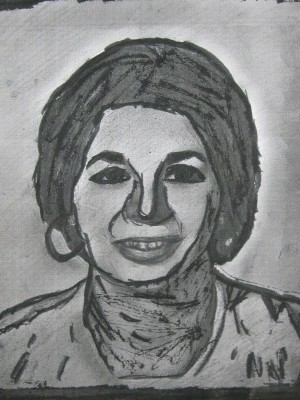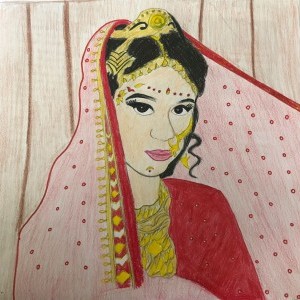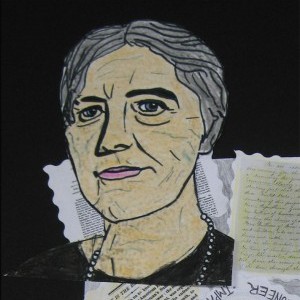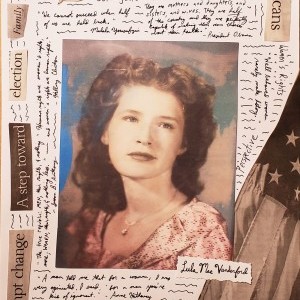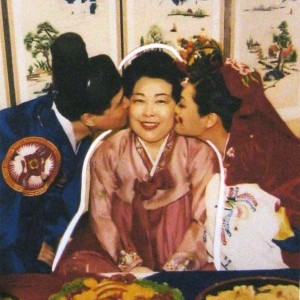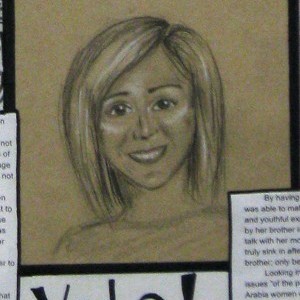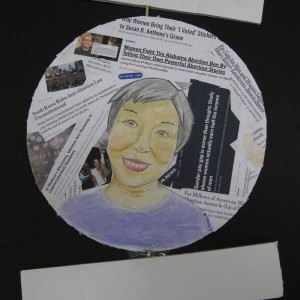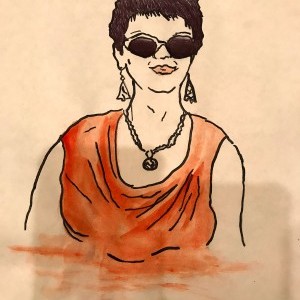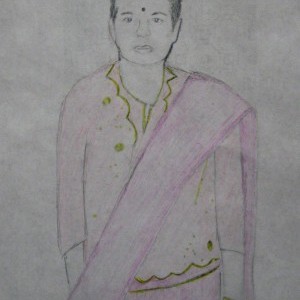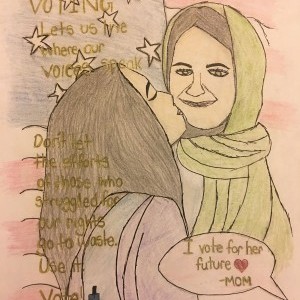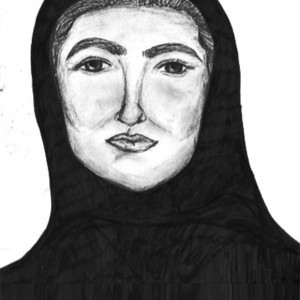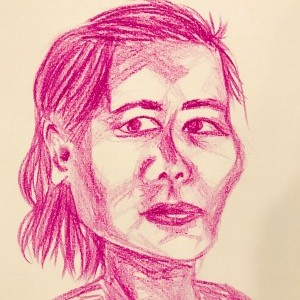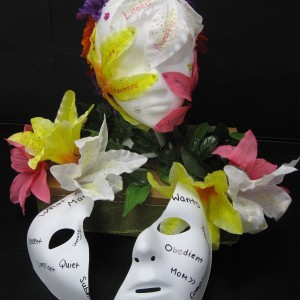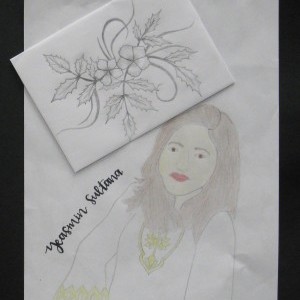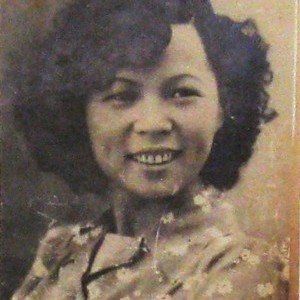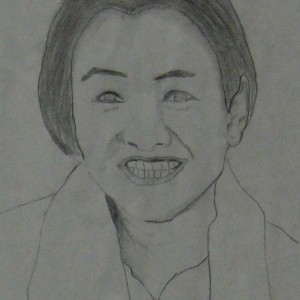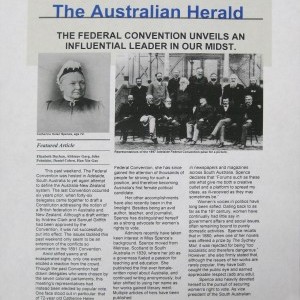Hallel Redner, Olivia Jablonski & Sandy Cai
Townsend Harris High School | Flushing, NY | 11th Grade
Inspirational Family Member
My Grandmother
Moving from her home country of Israel to the United States proved to be a daunting challenge for my grandmother, Dahlia Redner, in many ways. Yet, adopting the essence of the resilient flower after which she was named, she blossomed in a foreign environment, and made it her home. Her political voice as a new female citizen, along with each woman’s voice, added vivid color to a garden of resilient flowers rooted in land that had long been desolate.
Dahlia was born in 1938 in Givatayim, Israel, as the eldest child of an Iraqi family. Her parents had emigrated due to persecution about ten years before her birth, from a small village in Iraq to the lively city of Givatayim, where a large Iraqi community enabled them to keep the unique culture alive. She was ten years old when Israel became a state in 1948. This statehood was met with a drastic political change, from British control to a newfound democracy in which both men and women were able to determine the fate of their country through the power of the polls. Dahlia married Moshe Redner and had two sons, Gili and Ronnie, all the while actively participating in the country’s elections. After the tragic loss of their son, Gili, in a car accident, my grandparents decided that it was time for a change of scenery, and looked to the United States for the next chapter of their lives. As Dahlia stepped foot upon New York ground for the first time, she carried with her the fresh pain of losing a child, her family, and an expected child who would be my father. The language barrier was yet another obstacle that was thrown into her path to immersing herself in the female body of the United States. Her only knowledge of English consisted of the lyrics of American Jazz musicians such as Louis Armstrong, Ella Fitzgerald, and Frank Sinatra, whose records she would sing along to growing up.
Despite these hardships, my grandmother’s incredible optimism and tough skin acted as the glue for her young family as they rooted their life in the United States. She moved to New York in the midst of the Nixon election in 1968, and was finally able to vote in her first presidential election in 1976. When asked how she felt when voting for the first time, Dahlia responded, “I was extremely excited. It is our duty to voice our opinion, and I felt that this opportunity finally made me a part of the country.”
Historical Figure I Admire
Vida Goldstein
Born in Portland, Australia on April 13th 1869, Vida Jane Mary Goldstein was the eldest daughter of Jacob and Isabella Goldstein. Jacob, born in Ireland, was of Polish and Jewish heritage, while Isabella was of scottish descent. Both parents were heavily involved in charitable and social welfare organizations, such as the Melbourne Charity Organization Society and the Women’s Hospital Committee. Although he did not support the suffragist cause, Jacob Goldstein greatly valued education, and had a governess educate his daughters from a young age, and Vida later attended Presbyterian Ladies’ College in 1884. As her family struggled to earn an income during the depression in the 1890’s, Vida and her two sisters ran a preparatory school out of their family’s home.
Vida’s path to the suffrage movement was paved by her mother’s footsteps. She first immersed herself in the movement at the age of 22, when recruited by her mother to collect signatures for a petition in favor of women’s suffrage. Throughout the 1890’s, however, Vida mainly focused on her school and on urban welfare reforms such as the National Anti-SWEATING League, which called for reform in the workplace. Although she did not immediately become a loud voice for the suffragist movement, the work that she did for other movements allowed her to witness the disadvantages that women faced firsthand. At the turn of the century, Vida took upon herself a heavier load to carry for the suffragist movement, and became the secretary of the United Council for Woman Suffrage. She began to give speeches to packed halls in Australia, her words fostering the hunger in new members of the movement to rally behind its cause and fight for change. This hunger that her words incited soon spread across continents, in Europe and in the United States, as she “toured” with her passionate speeches. In addition to the speeches, Vida’s beliefs were publicized on paper through her monthly journal, The Australian Women’s Sphere. In 1903, only one year since women were given the ability to do so, she ran as an independent candidate for the Australian Senate. Ultimately, she was unable to secure a seat, despite winning over 5% of the total ballots.
Vida continued to run for a seat in the Australian Senate in 1910, 1913, and 1914. She may not have won the elections, but she was one of the few to help blaze a trail in uncharted, exciting territory for women. In 1902, Australia was one of the first countries to grant women the right to vote and hold office. Those rights in the United States, for example, only came with the ratification of the 19th amendment in 1920. As such, Vida Goldstein’s candidacy made her one of the first women in the world to be considered for national parliament, and marked a new beginning in suffrage history. Her message also stretched across oceans to encompass three continents, helping the movement unify on an international level and subsequently leave a more profound footprint with its greater numbers.
What the Project Means to Me
I am truly grateful for this project. I’m grateful for the opportunity it presented to delve into the world of an extraordinary suffragist, a world in which the rights that girls are born into today simply did not exist. Growing up in the twenty first century, I have become accustomed to the rights that I have, to vote and even to create laws. With these rights, women have recently achieved a respectable status in society, almost equivalent to that of men.
After researching Vida Goldstein and learning more about my family’s history, I’ve found that I often take the world that I live in today for granted. Sure, I’ve learned about influential leaders of the suffragist movement on slides in my history classes, and I’ve read in textbooks that women were often excluded from political life, but I have never fully allowed the reality of a time in which women made personal sacrifices for their rights to sink to the depths of me. It still has not fully sunken, and perhaps it never will, since I have never felt that pain and anguish firsthand. However, exploring the personal stories of both women did paint a complex picture that carries more emotional meaning than I’ve experienced before. Despite her losses in the elections for senate, Vida Goldstein has reinforced the notion of quiet victories. She didn’t get elected to national parliament, but what she did do —the trail that she paved for other women to follow— was a critical part of the success that the suffragist movement encountered.
I’ve known my grandmother for my entire life, yet I never considered the hardship of her only learning English as an adult who was busy raising a family and working to earn a living. This dedication, to learn English as well as to be an informed citizen, has echoed through her life, with her still having a strong political opinion today. This project has cultivated an even deeper appreciation in me for my grandmother’s emotional strength, and her ability to overcome unimaginable difficulties, yet still retain a strong desire to be politically active.
Our generation and women of the future are truly standing atop the shoulders of giants, overlooking the fields of resilient flowers that have already been planted and those that are just beginning to bud.
Explore the Archive
More From This Class
Click on the thumbnails below to view each student's work.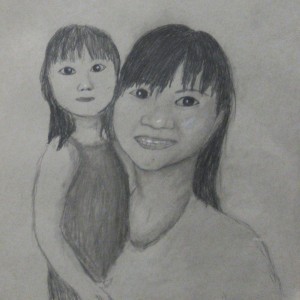
Vivian Chen, Josephine Chen, Ivan Chan, Zafirah Rahman, Neeharika Reddy, Daniel Shi, Daniel Shi, Jacqueline Cho & Osiris Guerrero

Jennifer Moran, Adebola Ademola, Julia Hong, Vicki Kanellopoulos, Inga Kulma, Maimunah Virk, Deborah Molina & Kailey Van
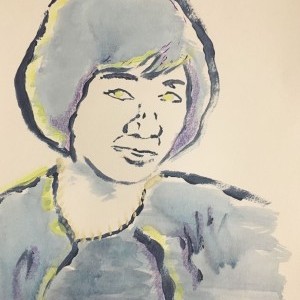
Kristina Chang, Sarah Chowdhury, Bethany Leung, Letian Fang, Cathy Choo, Kelly Chan, Emily Tan, Adamary Felipe & Kenney Son
Deadline Extended
There's still time to join Women Leading the Way.
Become a part of our storytelling archive. Enroll your class today.
Join the Project

